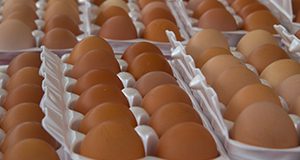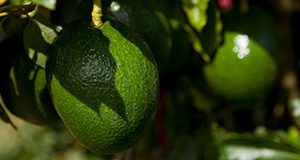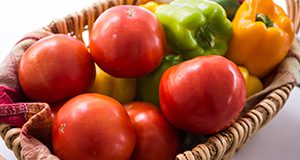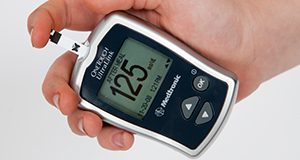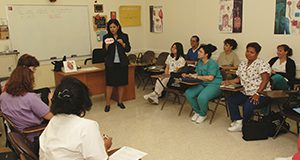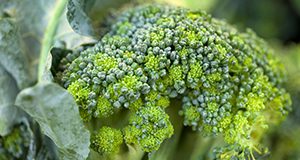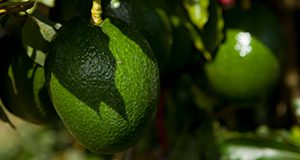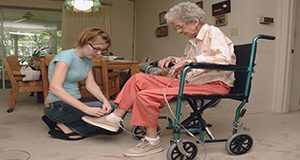Los huevos frescos pueden contener bacterias que podrían causar una enfermedad llamada salmonelosis. Esta enfermedad causada por alimentos provoca vómito y diarrea. Esta puede ser severa y hasta podría ser fatal para los adultos de mayor edad. Reduzca el riesgo de contraer esta enfermedad al seguir estas pautas. Written by Linda B. Bobroff and Jennifer Hillan, and published by the UF/IFAS Department of Family, Youth and Community Sciences, revised February 2018.
http://edis.ifas.ufl.edu/fy194
Tag: Linda B. Bobroff
Seguridad Alimentaria: Su cocina pasa la prueba?
Los adultos mayores corren un mayor riesgo de contraer enfermedades transmitidas por alimentos. Para ayudar a reducir el riesgo, es importante tener prácticas de manipulación de alimentos sanas. Cómo se compara su cocina? Written by Jennifer Hillan and Linda B. Bobroff, and published by the UF/IFAS Department of Family, Youth and Community Sciences, revised January 2018.
http://edis.ifas.ufl.edu/fy1163
South Florida Tropicals: Avocado
This 4-page fact sheet is a major revision that discusses the background, availability, selection, ripening, storage, uses, yield, nutritive value, and basic, safe preparation of the avocado. The document also contains several avocado-based recipes. Written by Linda B. Bobroff and Amy Simonne, and published by the UF/IFAS Department of Family, Youth and Community Sciences, revised January 2018.
http://edis.ifas.ufl.edu/he606
Healthy Meal Plans
A meal plan is a guide to help you plan daily meals and snacks. It allows you to eat foods you enjoy that provide a good balance of nutrients for your health. Meal plans can be used by anyone interested in healthy eating, and they are very helpful for people who want to manage their weight. This 20-page fact sheet is a major revision that discusses meal plans, food lists, and healthy choices. Written by Linda B. Bobroff, and published by the UF/IFAS Department of Family, Youth and Community Sciences, revised December 2017.
http://edis.ifas.ufl.edu/fy522
Healthy Eating: Lowering Your Blood Pressure with DASH
One eating plan that has been shown to prevent and reduce high blood pressure is DASH. This 3-page fact sheet is a major revision that discusses the DASH eating plan, its importance, foods included in the eating plan, and servings. Written by Valerie Weyenberg, Karla P. Shelnutt, and Linda B. Bobroff, and published by the UF/IFAS Department of Family, Youth and Community Sciences, revised December 2017.
http://edis.ifas.ufl.edu/fy1128
Living Well to Keep Your Pressure Down
High blood pressure, or hypertension, can cause serious health problems. It makes your heart work harder and can damage your blood vessels even if you feel okay. Everyone should have their blood pressure checked regularly. If you have certain risk factors, you are more likely to have high blood pressure. This 6-page fact sheet is a major revision that discusses risk factors and ways to reduce risk. Written by Linda B. Bobroff, and published by the UF/IFAS Department of Family, Youth and Community Sciences, revised November 2017.
http://edis.ifas.ufl.edu/fy305
Facts About Vitamin D
Vitamin D is needed for normal absorption of calcium and phosphorus. It helps put these minerals into bones and teeth. This makes bones stronger and reduces risk for bone fractures. Vitamin D also helps keep the immune system functioning normally, so our bodies can resist some types of disease. This 3-page fact sheet is a major revision that discusses effects of vitamin D deficiency, intake recommendations, and sources of vitamin D. Written by Linda B. Bobroff and Isabel Valentín-Oquendo, and published by the UF/IFAS Department of Family, Youth and Community Sciences, revised November 2017.
http://edis.ifas.ufl.edu/fy207
Prevencion de Caidas: Seguridad en el Hogar
La casa donde usted ha vivido la mayor parte de su vida ahora puede causarle problemas a medida que envejece. Lo bueno es que hay cambios que puede hacer para reducir el riesgo de caídas y mantener su casa un lugar seguro para vivir. Use la siguiente lista para identificar posibles áreas problemáticas en su casa. Repasado julio 2017. Written by Linda B. Bobroff, and published by the UF Department of Family, Youth and Community Sciences.
http://edis.ifas.ufl.edu/fy859
Sick Day Management for Adults with Diabetes Who Take Insulin
When people have type 1 or type 2 diabetes and take multiple daily insulin injections, their blood glucose levels can rise drastically due to a cold or another minor illness. This can result in serious health problems. The best way for people with diabetes to prevent a minor illness from becoming a major illness is to have a personalized sick day plan designed with their health care provider before they become ill. This 4-page fact sheet is a major revision that discusses ways in which illness affects diabetes control, development of a sick day plan, times to call your health care provider, checking blood glucose and urine ketones, medicines, and diet. Written by Nancy J. Gal and Linda B. Bobroff, and published by the UF Department of Family, Youth and Community Sciences, revised June 2017.
http://edis.ifas.ufl.edu/fy1281
South Florida Tropicals: Carambola
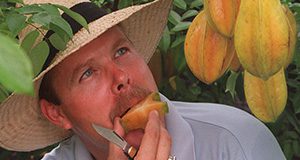 The carambola or star fruit is native to Southeast Asia. It was introduced to Florida about 100 years ago. This 4-page fact sheet is a major revision that discusses availability, selection, uses, nutritive value, and food safety during preparation of carambola. This document also includes several recipes. Written by Amy Simonne and Linda B. Bobroff, and published by the UF Department of Family, Youth and Community Sciences, revised April 2017.
The carambola or star fruit is native to Southeast Asia. It was introduced to Florida about 100 years ago. This 4-page fact sheet is a major revision that discusses availability, selection, uses, nutritive value, and food safety during preparation of carambola. This document also includes several recipes. Written by Amy Simonne and Linda B. Bobroff, and published by the UF Department of Family, Youth and Community Sciences, revised April 2017.
http://edis.ifas.ufl.edu/he613
Healthy Eating: Understanding the Nutrition Facts Label
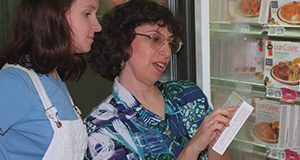 The U.S. Food and Drug Administration (FDA) requires that most food packages have the Nutrition Facts label. This label contains information about nutrients in the food to help people make healthier food choices. Older adults can use the label to choose foods that provide required daily nutrients or fit with a diet plan to manage a disease or health condition. This 4-page fact sheet is a major revision that discusses the Nutrition Facts label, checking calories, limiting certain nutrients, % Daily Values, and consuming enough fiber, vitamin D, potassium, calcium, and iron. Written by Linda B. Bobroff and Karla P. Shelnutt, and published by the UF Department of Family, Youth and Community Sciences, revised May 2017.
The U.S. Food and Drug Administration (FDA) requires that most food packages have the Nutrition Facts label. This label contains information about nutrients in the food to help people make healthier food choices. Older adults can use the label to choose foods that provide required daily nutrients or fit with a diet plan to manage a disease or health condition. This 4-page fact sheet is a major revision that discusses the Nutrition Facts label, checking calories, limiting certain nutrients, % Daily Values, and consuming enough fiber, vitamin D, potassium, calcium, and iron. Written by Linda B. Bobroff and Karla P. Shelnutt, and published by the UF Department of Family, Youth and Community Sciences, revised May 2017.
http://edis.ifas.ufl.edu/fy1127
Vida Saludable: Diabetes
La diabetes es una condición que ocurre cuando el cuerpo tiene dificultad para producir o utilizar la insulina. La insulina es una hormona que controla la cantidad de glucosa (azúcar) en nuestra sangre, informándole a las células cuanta glucosa pueden dejar entrar. Cuando una persona tiene diabetes, el cuerpo no produce o produce poca insulina, o produce una insulina que no funciona bien. Esto resulta en altos niveles de glucosa en la sangre. Controlar los niveles de glucosa en la sangre reduce el riesgo de otras complicaciones.
This 2-page fact sheet is a major revision that discusses diabetes and management techniques. Written by Linda B. Bobroff and Paulina Wittkowsky, and published by the UF Department of Family, Youth and Community Sciences, revised June 2017.
http://edis.ifas.ufl.edu/fy081
Choosing Healthy Meals As You Get Older: 10 Healthy Eating Tips for People Age 65+
After introducing MyPlate in June 2011, USDA provided a series of fact sheets to help consumers use the dietary advice of the Dietary Guidelines 2010. USDA continues to add fact sheets to the series, reflecting the most current Dietary Guidelines and issues important to consumers. This fact sheet was developed by the Center for Nutrition Policy and Promotion/USDA in partnership with the National Institute on Aging/National Institutes of Health, with an introduction by Linda B. Bobroff. This series of fact sheets is distributed by UF/IFAS Extension, June 2017.
http://edis.ifas.ufl.edu/fy1474
High Blood Pressure: What You Need to Know
High blood pressure, also called hypertension, increases your health risks. If you have high blood pressure, you have a higher chance of developing heart or kidney disease or having a stroke. This 4-page fact sheet discusses medical problems associated with untreated high blood pressure, risk factors, risk reduction, causes, and prevention. Written by Linda B. Bobroff, and published by the UF Department of Family, Youth and Community Sciences, revised October 2016.
http://edis.ifas.ufl.edu/fy199
Prevent Osteoporosis: Catch the Silent Thief
Osteoporosis means porous bones, or bones that have so many openings (pores) that they can easily break or be crushed. In the United States, 54 million people either have osteoporosis (10 million) or are at high risk (44 million) because they have low bone mass. By 2020, one in two Americans over the age of 50 is expected to have osteoporosis of the hip or be at high risk of developing the condition. This 11-page fact sheet discusses risk factors, calcium for bone building, calcium-rich foods, calcium supplements, vitamin D, and exercise. Written by Linda B. Bobroff, and published by the UF Department of Family, Youth and Community Sciences, revised February 2017.
http://edis.ifas.ufl.edu/fy469
Carotenoids and Eye Health
A diet rich in colorful fruits and vegetables provides a variety of nutrients as well as phytochemicals that can promote health. Lutein and zeaxanthin are two non-provitamin A carotenoids that may be protective against AMD, the leading cause of permanent central vision loss in older adults. This 3-page fact sheet provides an overview of carotenoids, AMD, lutein, zeaxanthin, risk factors for AMD, and good sources of lutein and zeaxanthin. Written by Linda B. Bobroff, and published by the UF Department of Family, Youth and Community Sciences, revised October 2016.
http://edis.ifas.ufl.edu/fy1217
Nutrition for Health and Fitness: Fat in Your Diet
We frequently hear about the epidemic of obesity. We also hear a variety of recommendations for how much and what type of fat we should have in our diets. With new research being published all the time, it can get confusing for consumers. This 8-page fact sheet is a major revision that provides tips to help individuals meet dietary guidelines and reduce health risks, as well as a few tasty recipes to try. Written by Linda B. Bobroff, and published by the UF Department of Family, Youth and Community Sciences, revised March 2017.
http://edis.ifas.ufl.edu/he695
Healthy Eating: Improve Nutrition with SNAP
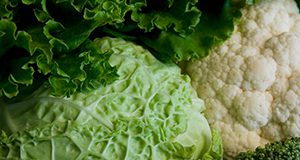 SNAP (the Supplemental Nutrition Assistance Program, formerly called Food Stamps) is one of several nutrition programs that help people meet their dietary needs. This 2-page fact sheet provides a brief overview of SNAP and examples of ingredients for healthy meals. Written by Linda B. Bobroff, and published by the UF Department of Family, Youth and Community Sciences, revised November 2016.
SNAP (the Supplemental Nutrition Assistance Program, formerly called Food Stamps) is one of several nutrition programs that help people meet their dietary needs. This 2-page fact sheet provides a brief overview of SNAP and examples of ingredients for healthy meals. Written by Linda B. Bobroff, and published by the UF Department of Family, Youth and Community Sciences, revised November 2016.
http://edis.ifas.ufl.edu/fy918
Vida Saludable: Diabetes
La diabetes es una condición en la que el cuerpo tiene dificultad de producir o utilizar la insulina. La insulina es una hormona que controla la cantidad de glucosa (azúcar) en nuestra sangre. Cuando una persona tiene diabetes, el cuerpo no produce insulina o produce muy poca insulina o una insulina que no funciona bien. Esto resulta en altos niveles de glucosa en la sangre.
This 4-page fact sheet is a major revision that discusses diabetes, possible consequences of high blood glucose, risk factors, healthy weights, symptoms, control methods, and ways to choose a healthy diet. Written by Linda B. Bobroff, and published by the UF Department of Family, Youth and Community Sciences, revised October 2016.
http://edis.ifas.ufl.edu/fy079
Prevencion de Caidas: Estilos de vida y riesgo de caidas
Hay muchos factores que pueden contribuir a las razones por las que usted se cae, pero algunos de éstos, los puede cambiar. A continuación le ofrecemos algunos cambios sencillos que puede hacer para reducir el riesgo de caerse.
This 2-page fact sheet is a major revision of the Spanish version of FCS2230/FY736:Fall Prevention: Lifestyle Factors and Fall Risk. Written by Linda B. Bobroff, and published by the UF Department of Family, Youth and Community Sciences, revised April 2016.
http://edis.ifas.ufl.edu/fy860
